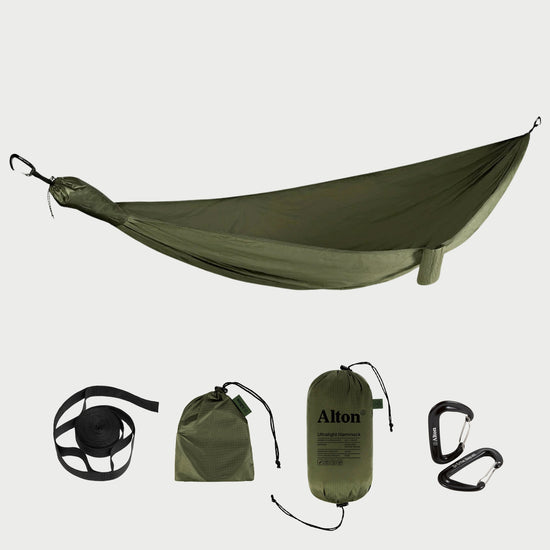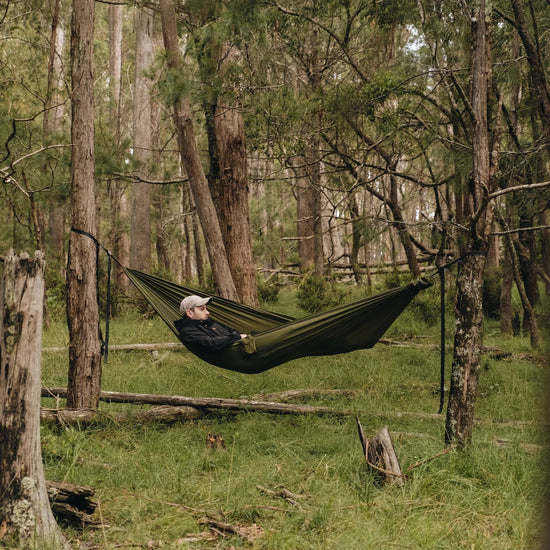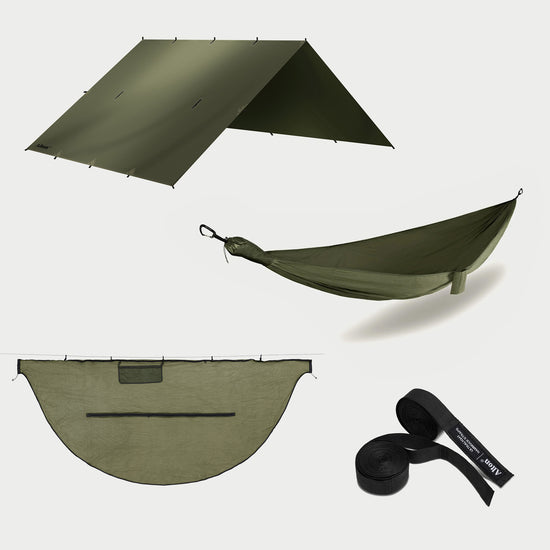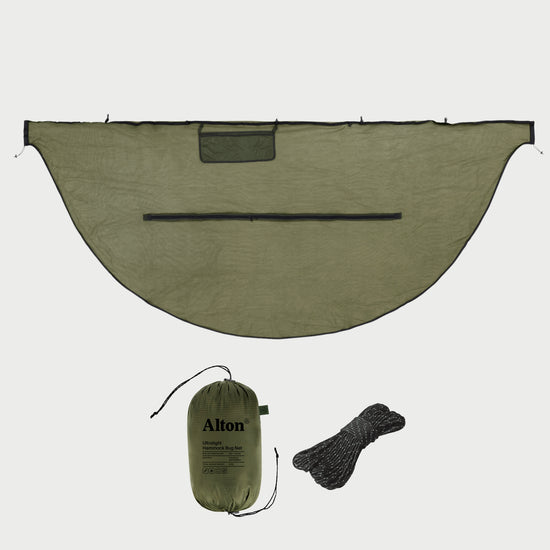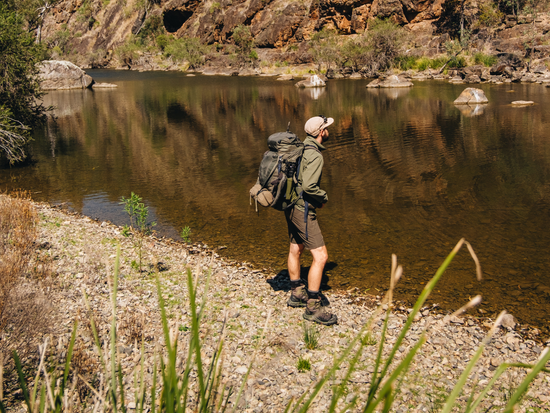Everyone agrees that hammocks are great for relaxing in, but are they actually a viable alternative to a tent for camping? Although hammock camping is still underground in Australia, more and more adventurers are choosing camping hammocks as their go-to shelter in the wild.
We’ve already unpacked why we think you should try hammock camping, but in this blog we dive deeper into the pros and cons of hammock camping so that you can decide if it is right for you.
The Pros of Hammock Camping
1. Camping hammocks are incredibly comfortable
One of the biggest selling points for camping hammocks is their comfort. When set up correctly, hammocks provide an incredibly comfortable sleeping surface that contours to your body, gently cradling you as you drift off to sleep. Hammocks can improve your sleep quality and help you wake up feeling rested.
2. You can camp in more locations
With a camping hammock in your pack, you have the flexibility to camp in a wide variety of places. All you need are two solid anchor points, usually two trees, but posts, rocks and even vehicles can be used if it comes to it. Your camping hammock can be suspended over sloping, uneven, wet or otherwise inhospitable ground.
3. You can adapt your camping hammock to the conditions
With a few additions, hiking hammocks can provide you with a protective shelter in even the most extreme conditions. In wet, snowy or windy weather, you can easily pitch a tarp over your hammock setup and add extra insulation with a hammock underquilt. If it’s hot and humid, just add a hammock mosquito net to create a bug-free zone.
4. They are quick and easy to set up
Camping hammocks only require a couple of minutes for setup and pack down, making them very efficient in the wild. Once you’ve learnt how to set up your camping hammock it is easy to replicate the process and ensure you can enjoy the same level of comfort, night after night.
5. Camping hammocks provide superior ventilation and airflow
Improved ventilation is an advantage in all weather conditions. If it is cold or damp, better airflow leads to less condensation, keeping you and your gear dry. On the other hand, in hot and humid conditions, the natural airflow around your body will keep you cooler through the night and improve your sleep.

6. They are lightweight and compact
Hammocks are popular among ultralight hikers for a reason! Without features like zippers or poles, camping hammocks can be significantly lighter and more compact than tents.
7. You can get closer to nature
There is something special about being suspended in your hammock that makes you feel closer to nature. You can take in the view, fall asleep under the stars and wake up to the glow of dawn. Instead of being shut away in a tent or hut, you are right there, fully aware of the beauty of the landscape around you.
8. Camping hammocks are more environmentally friendly
With proper setup and tree-safe straps, camping hammocks have minimal impact on the ground and vegetation, allowing you to leave the natural environment as you found it. This makes hammock camping a better option for wild camping, away from designated campsites.
9. You can use your camping hammock in multiple ways
Hammocks give you a place to relax at any time. As well as being your bed for the night, they double as a comfortable seat. And, when you are not camping, you can use your camping hammock at the beach, park or even set it up in the backyard.
10. Camping hammocks are more affordable
A good quality tent can set you back hundreds or even thousands of dollars. Camping hammocks are considerably more affordable, with prices starting under $50 and then going up from there depending on the add-ons you select.

The Cons of Hammock Camping
1. Hammock camping isn’t possible everywhere
For all the freedom hammock camping can offer, there is no getting around the fact that it requires trees, or alternative anchor points. For this reason, alpine environments, treeless areas such as deserts, or densely forested locations may not be suitable for hammock camping.
2. They have a setup learning curve
When first starting out, knowing where and how to set up your camping hammock can take a little while to get the hang of.
3. You’ll need to adjust to a new sleeping position
It is normal to need a few days to adjust to sleeping in your camping hammock. Comfort is subjective, so while many people find camping hammocks very comfortable, not everyone will.
4. You might feel the cold more
Because camping hammocks hold you suspended in the air, you will lose more body heat. While this can be great in warm conditions, in cold weather it is critical that you are prepared and have enough insulation.
5. Camping hammocks have limited space
Camping hammocks do not provide much space for storing gear. Limited space also can make hammock camping unsuitable if you are camping with a partner. Even in camping hammocks that are designed for two, sharing a hammock overnight can test the limits of your relationship.
6. Camping hammocks offer less privacy
Without walls to conceal you, hiking hammocks can leave you feeling a little exposed. Fortunately, you can make your setup more private with a tarp or bug net, but a hammock is never going to offer as much privacy as a tent.

Is hammock camping worth the hype?
Alright, we will admit that we might be biassed (we do have a bit of a thing for hammocks, afterall), but here at Alton we think the pros of hammock camping far outweigh the cons. Comfortable, lightweight and just a whole lot of fun, there are so many reasons why you should try hammock camping.






